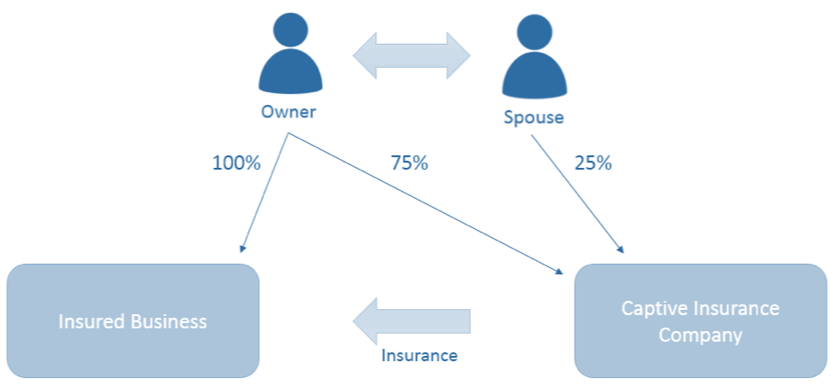April 13, 2018
Filing under IRC §831(b)? Diversification Criteria Elucidated
On March 23rd the Consolidated Appropriations Act of 2018 (the “Act”) was signed into law, bringing with it clarification of the diversification requirements created by the Protecting Americans from Tax Hikes Act of 2015 (the “Path Act”) for small insurance companies under Internal Revenue Code (“IRC”) §831(b). The Act establishes a new look-through provision for controlled groups, further defines a relevant specified asset, and amplifies the ownership rules to address certain aggregation among family members. Several of these updates should have a positive impact on the captive insurance industry.
The Path Act modified IRC §831(b) leaving in its aftermath several outstanding questions for captive insurance companies, some of which have been addressed by the recent Act. The Path Act mandated that taxpayers pass one of two new diversification tests in order to be eligible for the §831(b) election. These tests, before amendment under the Act, were as follows:
(1) No more than 20 percent of the net written premiums (direct written if greater) of a company may be attributed to any one policyholder, or
(2) No person who is a specified holder owns a direct or indirect interest in the insurance company that exceeds more than a de minimis percentage of the percentage of interest in the insured(s).
Diversification Requirement (1)
In passing the recent Act, Congress clarified the definition of a policyholder by providing a new look-through provision for reinsurance or any fronting, intermediary, or similar arrangements. The new law now defines a policyholder in these circumstances as:
“each policyholder of the underlying direct written insurance with respect to such reinsurance or arrangement.”
This clarification should have a positive impact on the insurance industry because those captives involved in such arrangements could have inadvertently been viewed as insuring only one policyholder, or otherwise failing the 20% concentration requirement. These structures often reflect a pass-through nature, when in reality they involve underlying policyholders with risk exposures that would otherwise be well diversified if insured directly by a captive. Overall, the separation of insureds under the Act improves a captive’s likelihood of passing the first diversification test.
This illustration demonstrates this concept:

In this example, the reinsurance company is receiving all of its premiums from one insurance company. Under the clarified definition, each underlying individual insured would be considered a policyholder to the reinsurance company. Assuming no more than 20% of the premiums received by the insurance company could be attributed to a single policyholder, it would pass the test. This concept is also similar to captives involved in risk pools. Under the revised definition of a policyholder, the pool itself would not be considered an individual policyholder, but rather all the participants involved in the pool.
Diversification Requirement (2)
Assuming a captive fails the first diversification test, they can still qualify under §831(b) if the ownership structure for the program satisfies the criteria under the second test. Under this test, a specified holder, including a spouse or lineal descendant of an insured businesses’ owner, cannot own a greater share of the captive insurance company than they do in the insured business itself. Specifically, they cannot own an interest in the captive greater than 2% of their ownership in the specified assets of the insured.
The Act altered this test by removing from the definition of “specified holder” the spouse of the owner or shareholder, thereby making ownership percentage of the captive by the spouse not relevant unless the spouse is not a US citizen. Spouses of lineal descendants are still subject to the specified holder tests. In addition, the new law makes it clear that any interest held, directly or indirectly, by the spouse of a specified holder is deemed held by the specified holder.
The Act revised the definition of specified assets to “relevant specified assets.” Relevant specified assets are defined as the amount of an interest in the trade, business, rights or assets insured by the captive held by the specified holder. This excludes any assets transferred to a spouse or from a decedent to their heirs during the current or preceding tax year.
The following illustrates an ownership structure wherein a specified holder and their spouse each own a share of an insured business and a captive that are participating in an insurance transaction:

Before the Act was passed, this transaction would have failed the second diversification test, since the spouse would have been considered a specified holder. As a specified holder, the spouse could not own more of the captive than the insured business. However, the revised act removes the spouse from the definition of a specified holder. Since the spouse would no longer be considered a specified holder, it is irrelevant that their ownership in the captive is greater than their ownership in the insured. The captive insurance company would pass the second diversification test.
When the attribution rules are considered, the spouse’s interest would be considered to be that of the owner, the specified holder. Since the owner would own more of the insured business than the captive, the transaction would still pass the second diversification test and the captive would qualify under IRC §831(b). Additionally, the only assets considered in the second diversification test would be those owned by the specified holder and their spouse, rather than all assets with respect to which the premiums of the insurance company were paid.
The amendments made by the Act will be effective retroactively to January 1, 2017.

